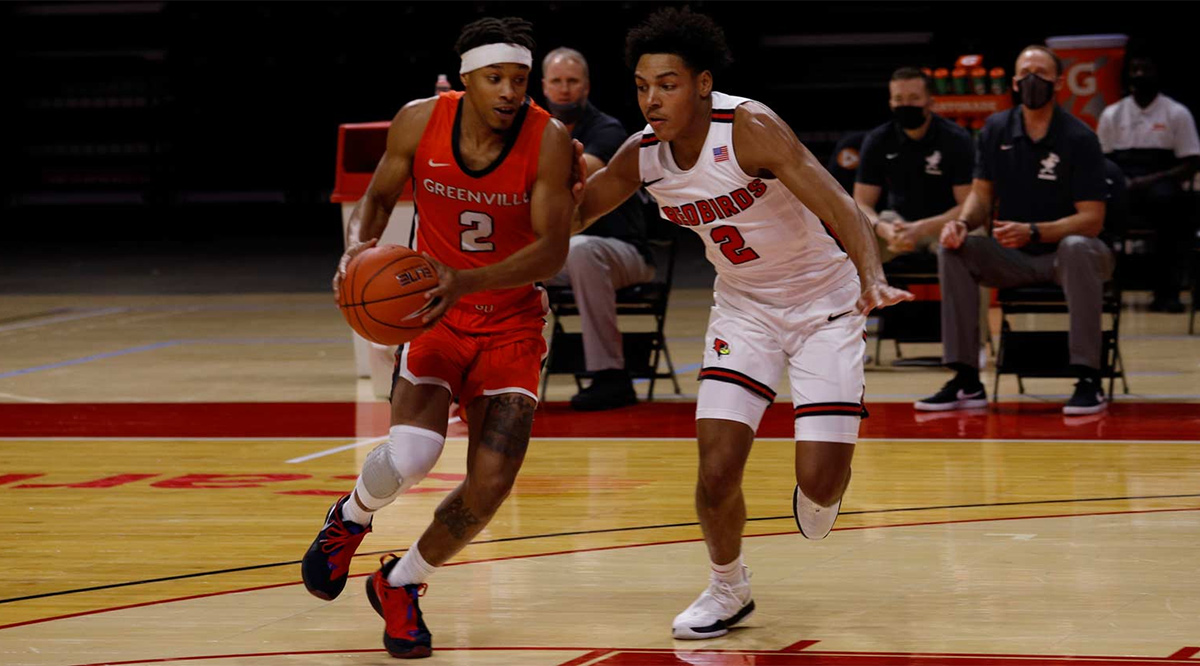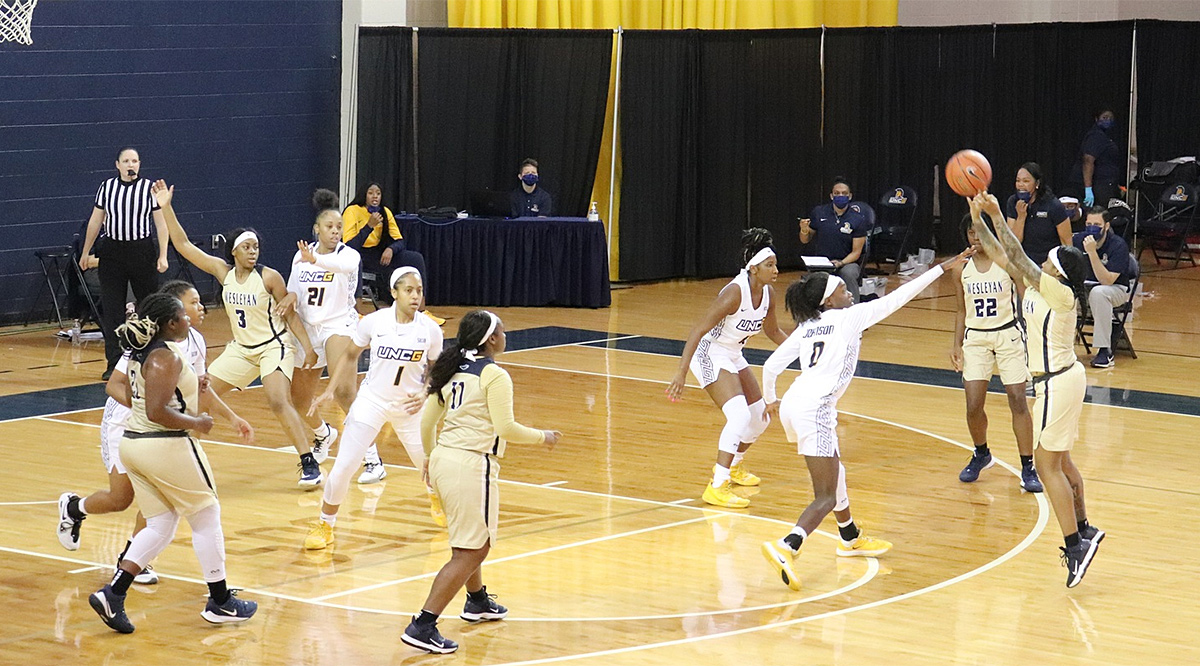
|
| Transylvania athletics photo |
By Ryan Scott
D3hoops.com
Division III basketball teams can reap very real benefits from playing Division I opponents. As Greenville coach George Barber told Hoopsville earlier this year, the Panthers tripled their typical annual fundraising totals with a string of five Division I contests in the fall semester of 2020.
In a non-COVID year, playing games against non-Division III opponents can hurt a team when it comes to Pool C selection for the NCAA Tournament. Transylvania has a long history of playing scholarship schools in exhibitions, which they did again this season, but they also added five Division I games to the regular schedule.
“We were trying to get in some Division III games,” says Transylvania men's basketball coach Brian Lane. “There was nobody close and the positivity rates [in states where teams were willing to play] didn’t allow us to travel.”
Civic, conference, and school protocols have obviously been crucial in whether teams can play or not, but cost of testing is also a huge obstacle. Division I opponents require testing three times a week and schools have made different arrangements to provide and pay for what can be a very expensive process.
“We’ve got a relationship with a local lab,” says Lane. “That has made the process quicker and more manageable for us.” Transylvania is footing the bill for rigorous testing of all staff and students on campus, not just athletes. “We have never taken this lightly,” adds Lane. “The safest I feel is when I’m on campus.”
Not every school has the resources to test like Transylvania, but many have come up with novel solutions. Some have sought corporate sponsorships to cover costs, others have done specific fundraising, still others, like Greenville, have partnered with research programs and hospitals.
The University of Illinois developed a proprietary and highly effective test early on and used campuses, like Greenville, to test its use in communal settings. This enabled free testing for everyone twice a week on campus, which significantly lowered the cost for meeting NCAA testing requirements.
That allowed Barber to send out an email offering “to play anyone, anywhere, anytime.”
He received 300 responses.
“Most of the Division IIIs couldn’t play until January,” says Barber, “but we had a lot of Division I interest.”
It was reluctant interest. Given Greenville’s fast-paced, chaotic, System style, they were definitely not the first choice for anyone.

|
| Kenneth Cooley scored 31 points in a December game against Illinois State. Illinois State University athletics photo by Emily Bollinger |
Barber explains, “They call back the next day and say, ‘No, we’re not gonna play you,’ and I have to bear with that a day or two and they call back and they go, ‘Jeez, George, we couldn’t find anybody else. You’re the last team on the face of the Earth we want to play, I guess we’ll play you.’ ”
Every team Greenville faced set a scoring record. The results were lopsided. “It’s not a lot of fun to lose by so much,” notes Barber. “But as our president said, ‘there really no such thing as bad publicity.’ ”
Greenville, a very inexperienced team, due to graduations and other issues, really didn’t compete for wins, but Transylvania, having returned most of an NCAA Tournament team, showed well for Division III. “The announcers said – and we already knew this,” notes Lane, “that many of our guys belonged in those games. Zach Larimore was the best player on the floor at times.” Largely because of Larimore’s contributions, Transylvania was down just nine at the half against Eastern Kentucky and ultimately lost 81-60.
There may have been more regular season Division III games against Division I opponents already this season than in the previous decade combined. Only one team, though, has come out with a victory thus far. The North Carolina Wesleyan women beat UNC-Greensboro 52-37 on Dec. 7.

|
| Photo for N.C. Wesleyan by Mike Armbruster |
“I’d love to say it was our stellar defense,” says NCWC coach Artina Trader, “but it was just an unusual night.”
Neither team shot even 30% from the floor and no player scored in double figures. “I am very proud of our rebounding,” says Trader, whose team won the battle on the boards 64-42. “We always rebound well, but my tallest player is 5-9 – to go out and perform that way against a Division I opponent really speaks a lot for them.”
Trader’s team has played four Division I opponents before starting conference play next week. Like Lane and Transylvania, North Carolina Wesleyan often schedules Division I exhibitions to get the team ready. “It’s fun,” says Trader. “To play in those arenas is a great experience, but it also exposes your weaknesses tremendously.”
It’s no doubt that teams who played in the fall of 2020 will be more ready for games in 2021. “We have some of the unknowns out of the way,” says Trader. Adds Lane: “The mental health part of this deal has been concerning – I can see it on the faces of our coaches and players. It’s really helpful to be able to get out there and play.”
It’s also taken a lot of work. Both Transylvania and Greenville split the team into smaller groups that do everything together – Transylvania even takes separate vehicles on road trips. Time in the gym is divided up. Transylvania has limited athletic department personnel on campus to 20 at a time, so the coaches have to sign in and out of the building.
Greenville and Transylvania each had one positive test early on, but largely players have understood what’s required to continue to play. Trader, whose team has been COVID-free so far, says: “My players understood from the jump: you have to be diligent, responsible, and disciplined. It is hard, though, they’ve not been able to do anything but basketball, especially once classes ended.”
In a normal season, the attention would be on these teams having an opportunity to play big-name opponents in big arenas, Division III showing off against Division I. Divisions don’t seem to matter much in 2020-21. The opportunity to play, the extra time and resources invested in athletics by the schools to allow for play, the sense of normalcy in the midst of the unknown, these are the things that have become central this season.
If anything, COVID has supercharged the important elements of college basketball: sacrifice, teamwork, attention to detail, commitment. They’re being required like never before, not just to win, but even to be able to take the court. Some people may be taking this pandemic lightly, but they’re not people who get to play basketball.
